1. WHEEL DIAMETER
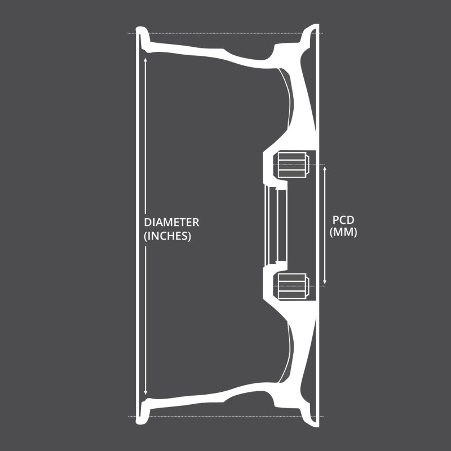
Example: 6.5×15
Explanation: 15 is the wheel diameter and 6.5 is the wheel width
Notes: The larger size of the two is normally the diameter, with the smaller being the rim size
- Wheel diameter is referred to in inches.
- Diameter of the ‘rim’ in inches (excluding the tyre).
- Standard road cars generally have wheels that are between 14 inch and 19 inch in diameter.
- Luxury, sporty cars, SUVs and 4×4 vehicles generally have the bigger size wheels.
2. Wheel Width
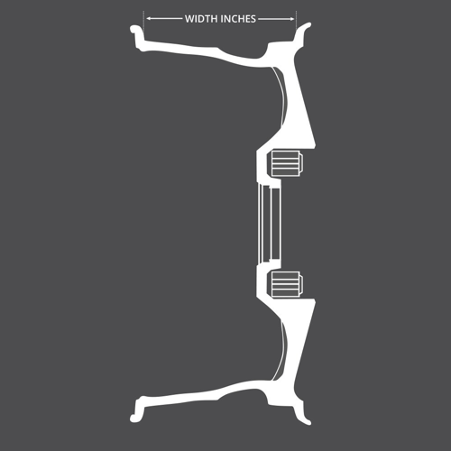
Example: 6.5×15
Explanation: 15 is the wheel diameter and 6.5 is the wheel width
Notes: The larger size of the two is normally the diameter, with the smaller being the rim size.
- The width of the wheel will dictate the tyre sizes that will fit on the wheel.
- The wider the width, the wider the tyre size that will fit on the wheel.
- Example: 6.5×15 will normally fit a minimum tyre width of 185, an ideal of 195/205 and a maximum tyre width of 215. Depending on the alloy wheels and vehicle body.
- Wider wheels and tyres gives your tyres better grip on the road, giving your car better road holding and braking than tyres that are narrower.
Wheel Offset
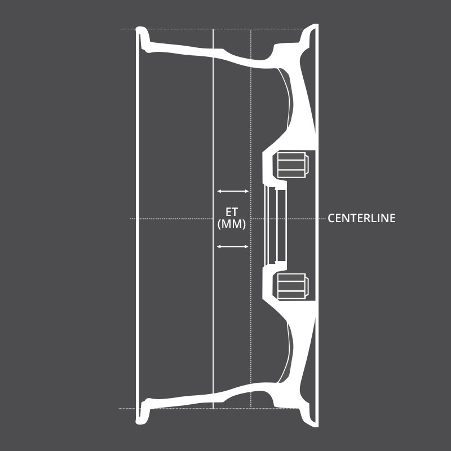
Example: 6.5×15
Explanation: 15 is the wheel diameter and 6.5 is the wheel width
Notes: The larger size of the two is normally the diameter, with the smaller being the rim size
- Wheel offset is measured in mm and determines how far the wheel will stick out.
- Offset with a minus indicates a negative offset e.g. “-12”, while the absence of a minus indicates a positive offset e.g. “ET38”.
- Zero offset: mounting face is exactly centre within the wheel.
- Positive: mounting face is positioned further outbound from the centre.
- Negative: mounting face is further inboard from the centre of the wheel.
- The correct offset is highly important. The wheels wont’ fit if you stray too far outside of the correct measurements or catch on a fender / brake calipers.
Bolt Fitment – PCD
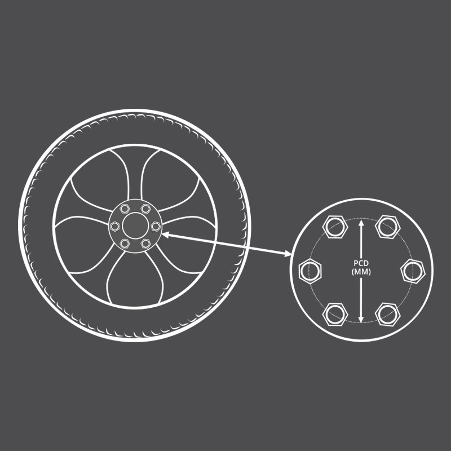
Example: 6.5×15
Explanation: 15 is the wheel diameter and 6.5 is the wheel width
Notes: The larger size of the two is normally the diameter, with the smaller being the rim size
- PCD is the diameter of an imaginary circle which passes through the centre of all the wheel bolts / lug nuts.
- The diameter of the circle is measured in mm.
- Vehicle bolt patterns are normally 4, 5, 6 or 8 lug holes depending on the vehicle make & model.
Centre Bore
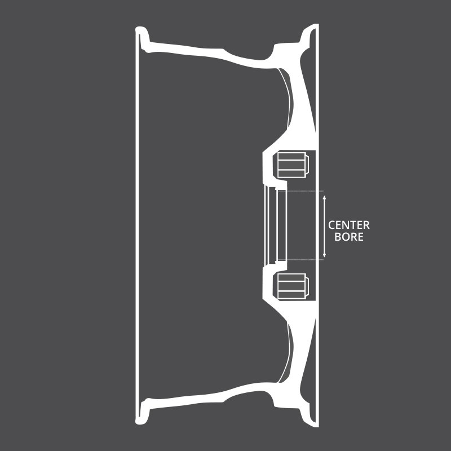
- The size of the centre hole in the middle of the wheel.
- Measured in mm.
- Normally covered by a centre cap.
- The wheels won’t fit if the centre bore of the wheels are smaller than that of your car’s.
- Spigot rings needs to be fitted, if the bore is larger than that of your car’s.
- Spigot rings allows the wheel to be firmly centred on the hub.



Comments are closed, but trackbacks and pingbacks are open.